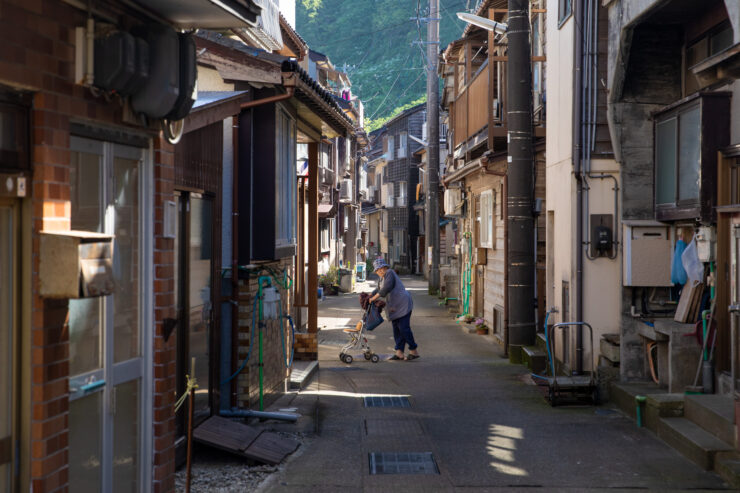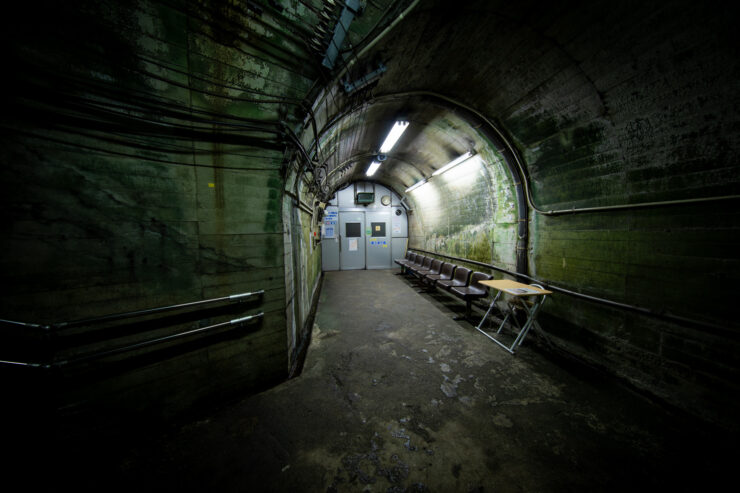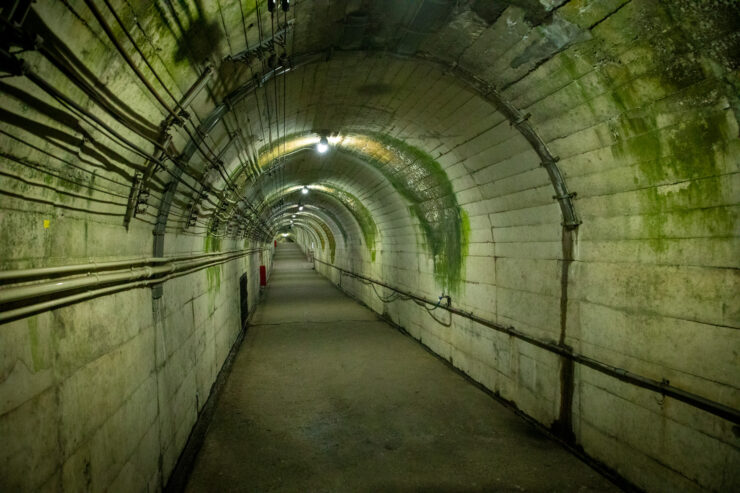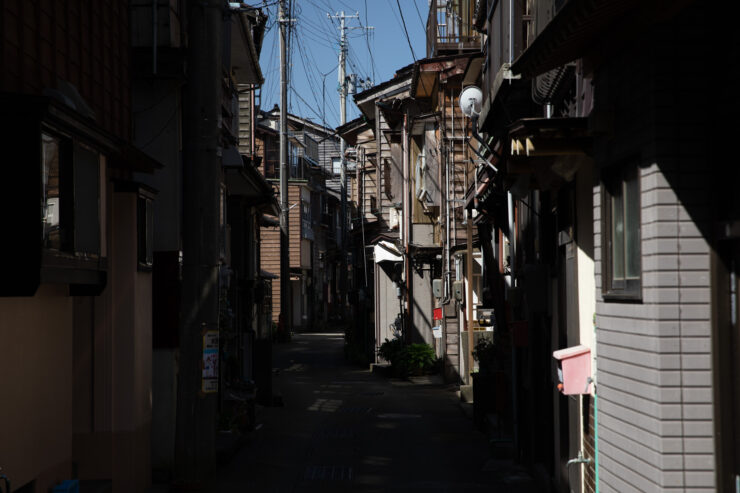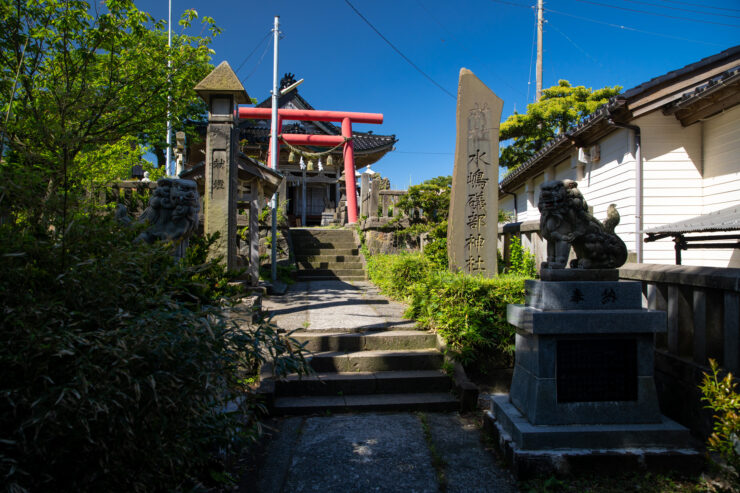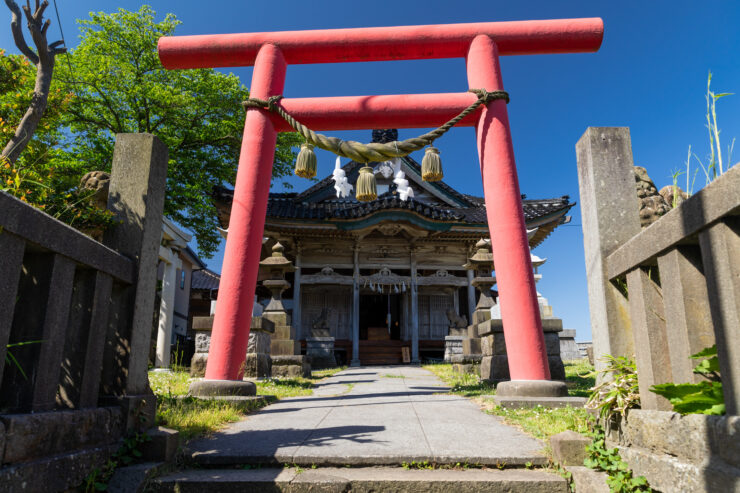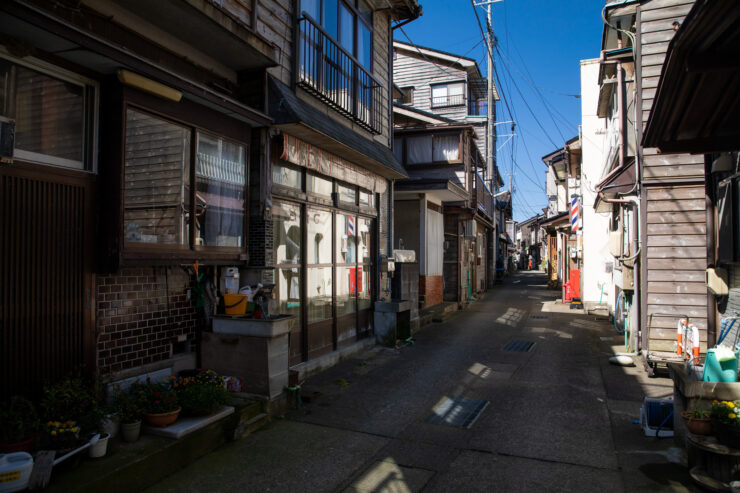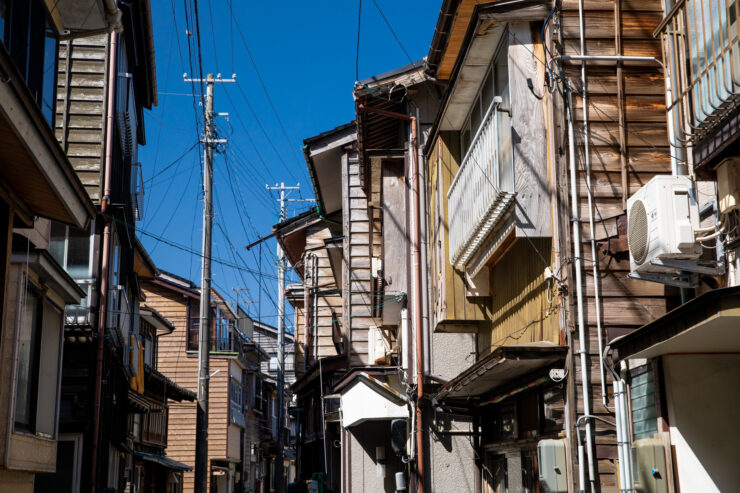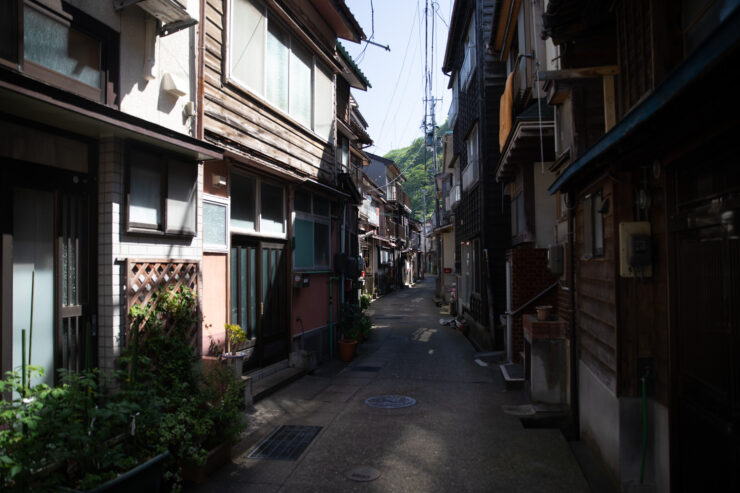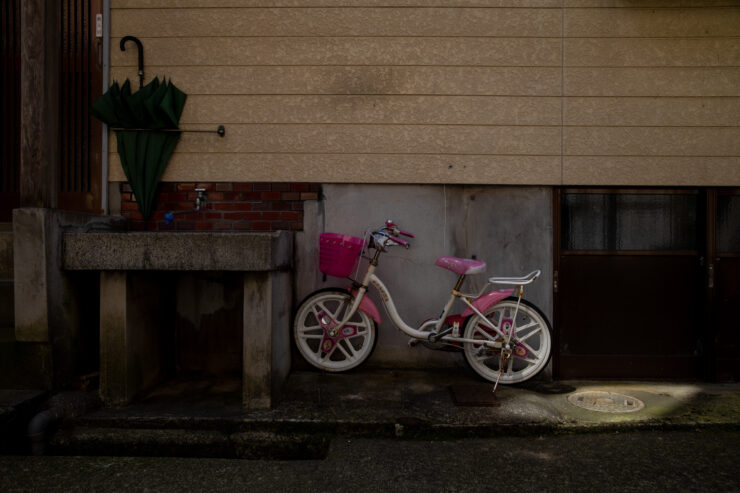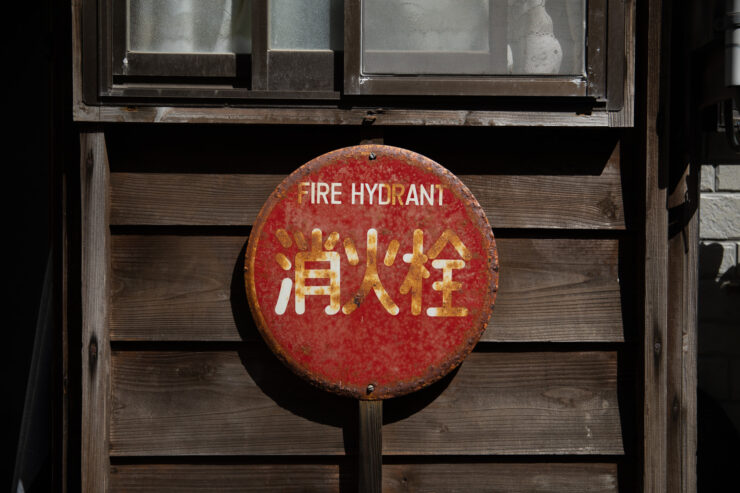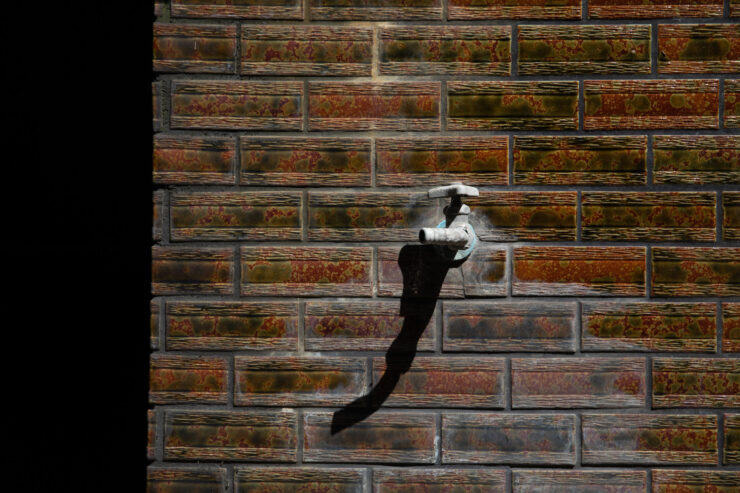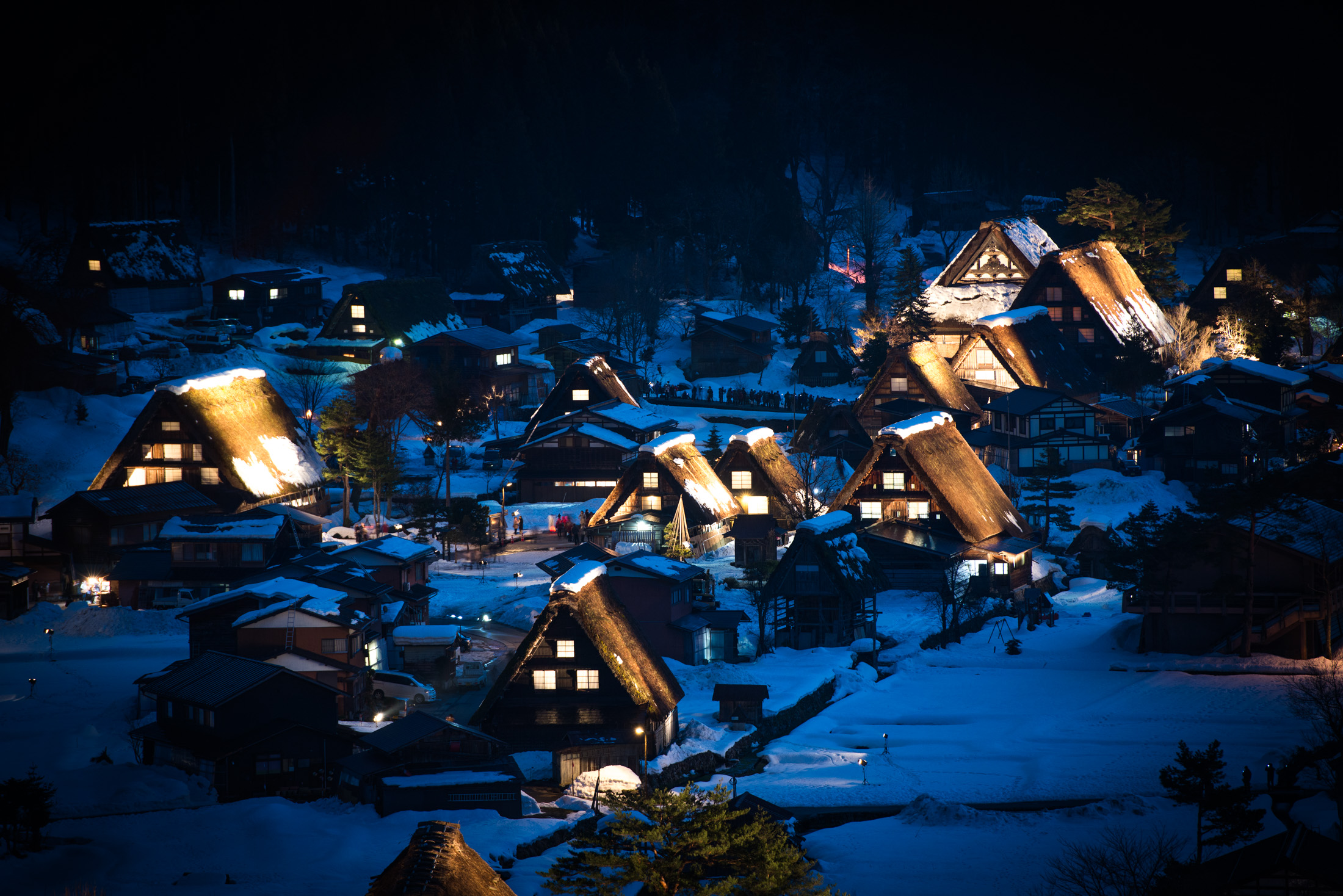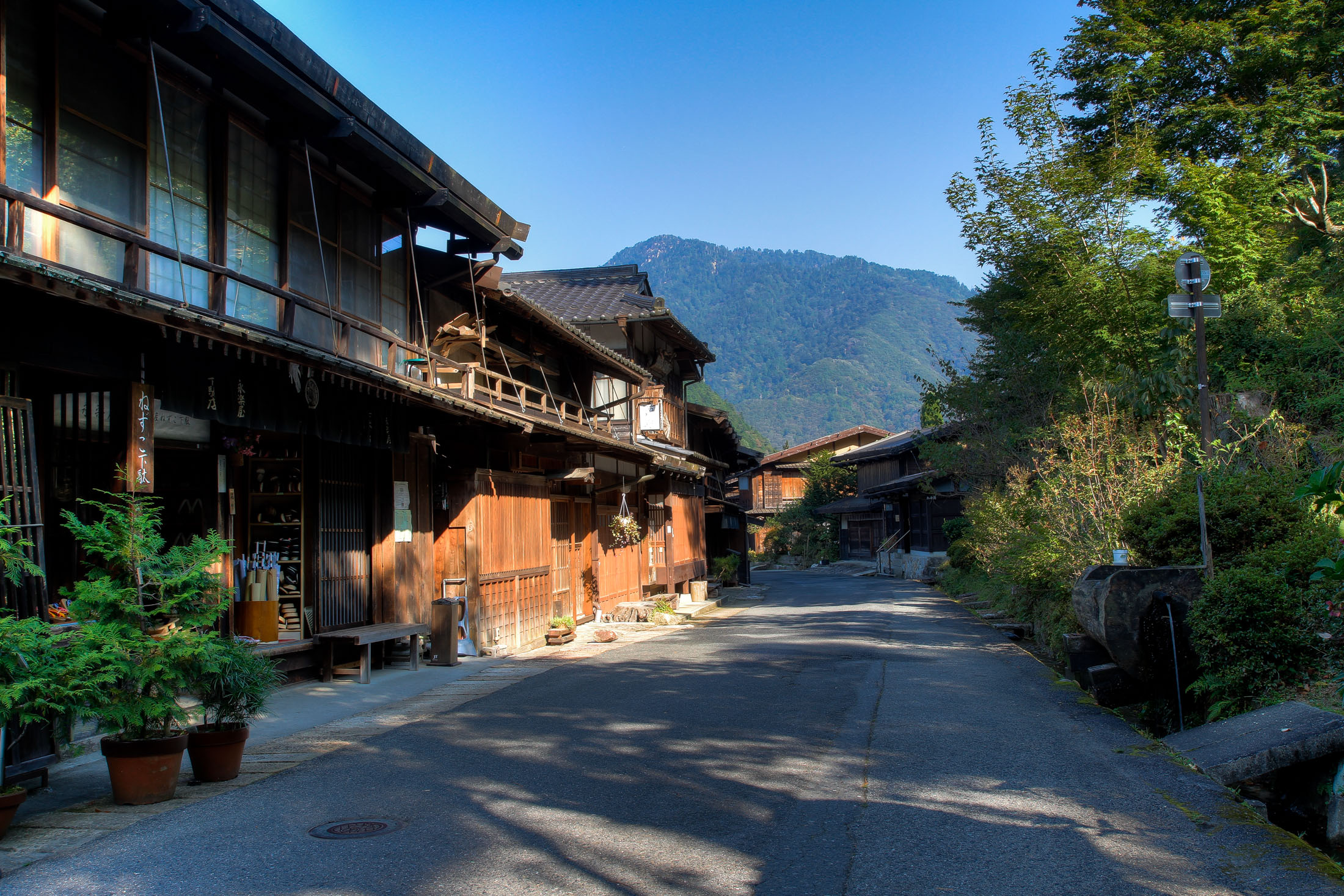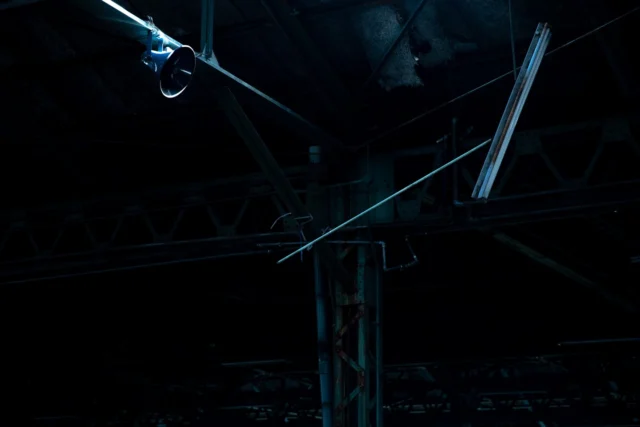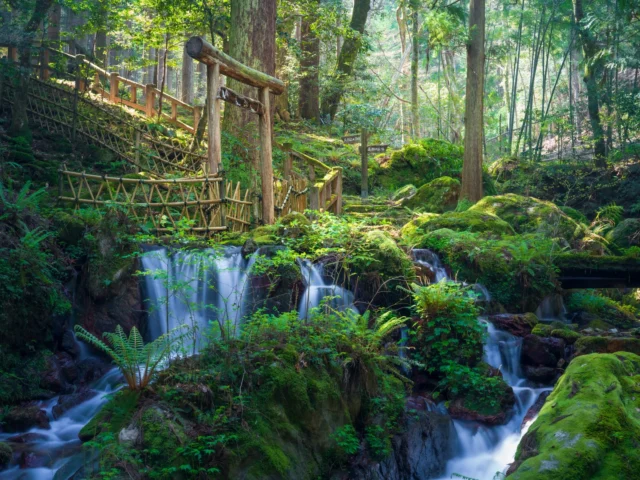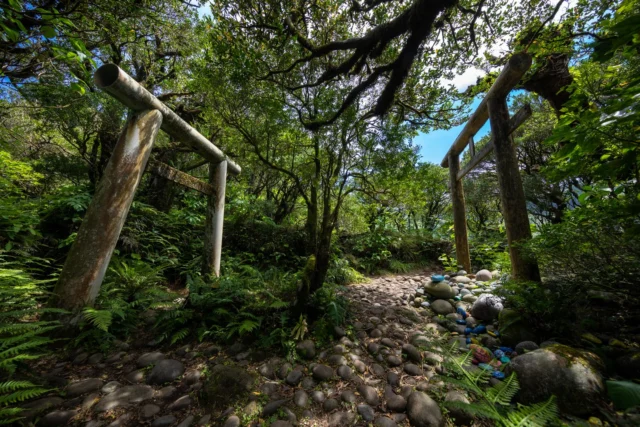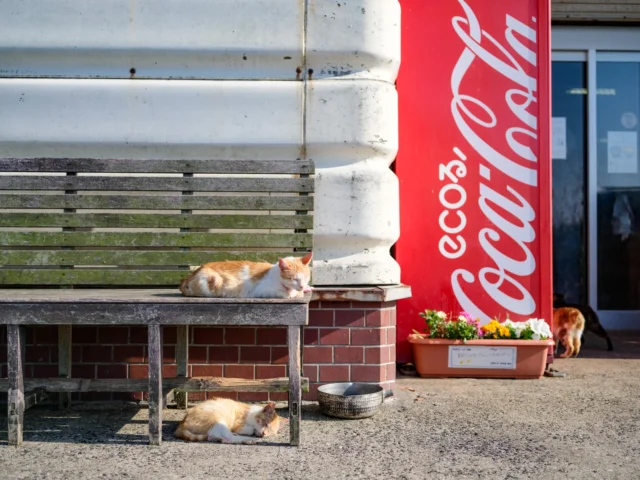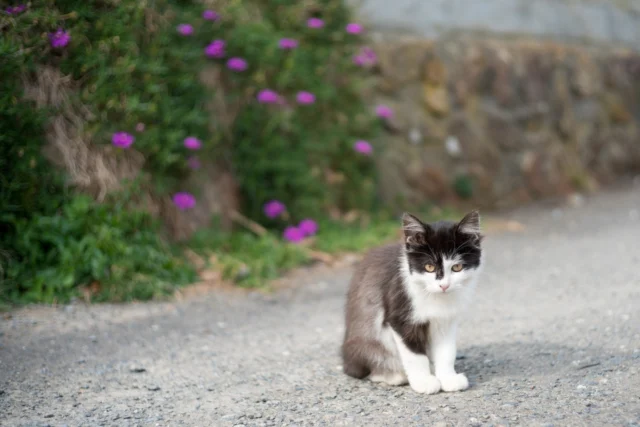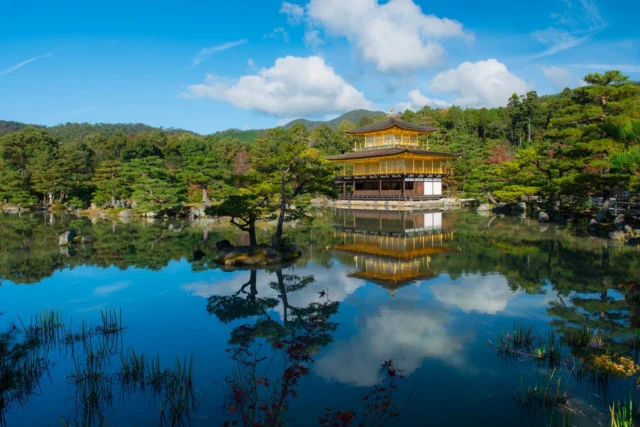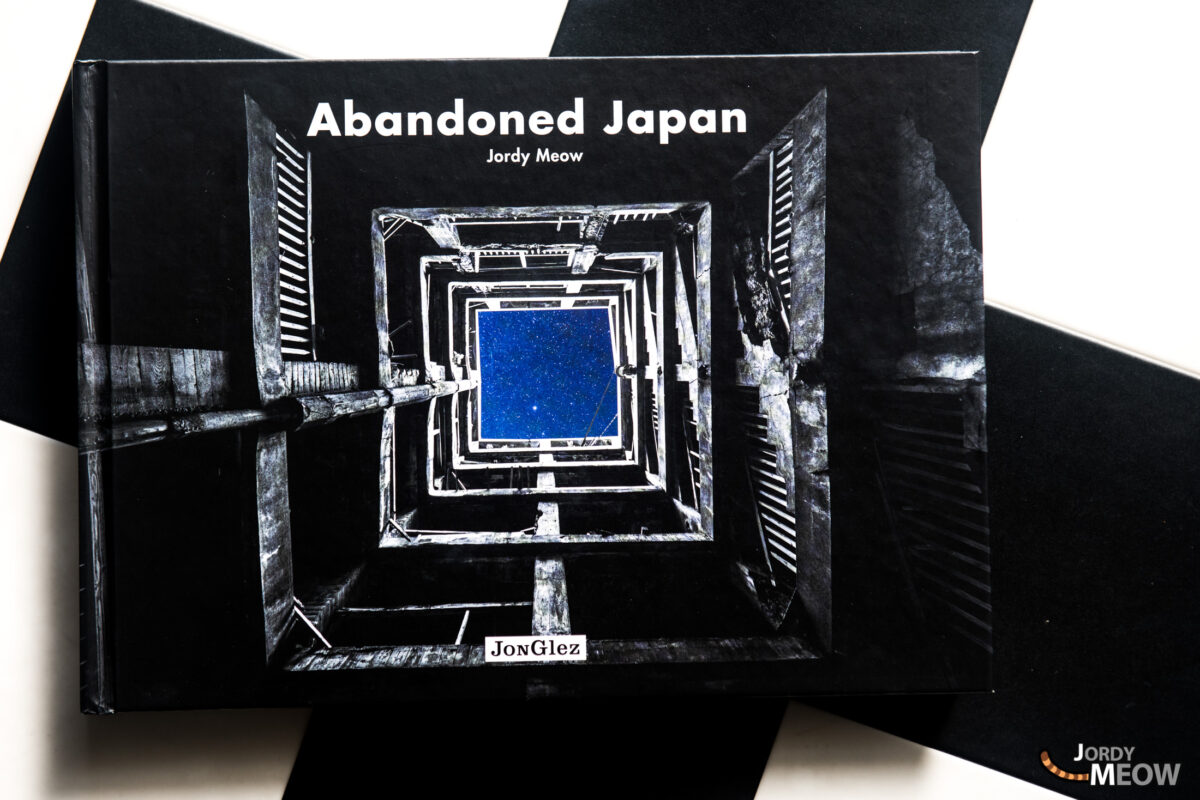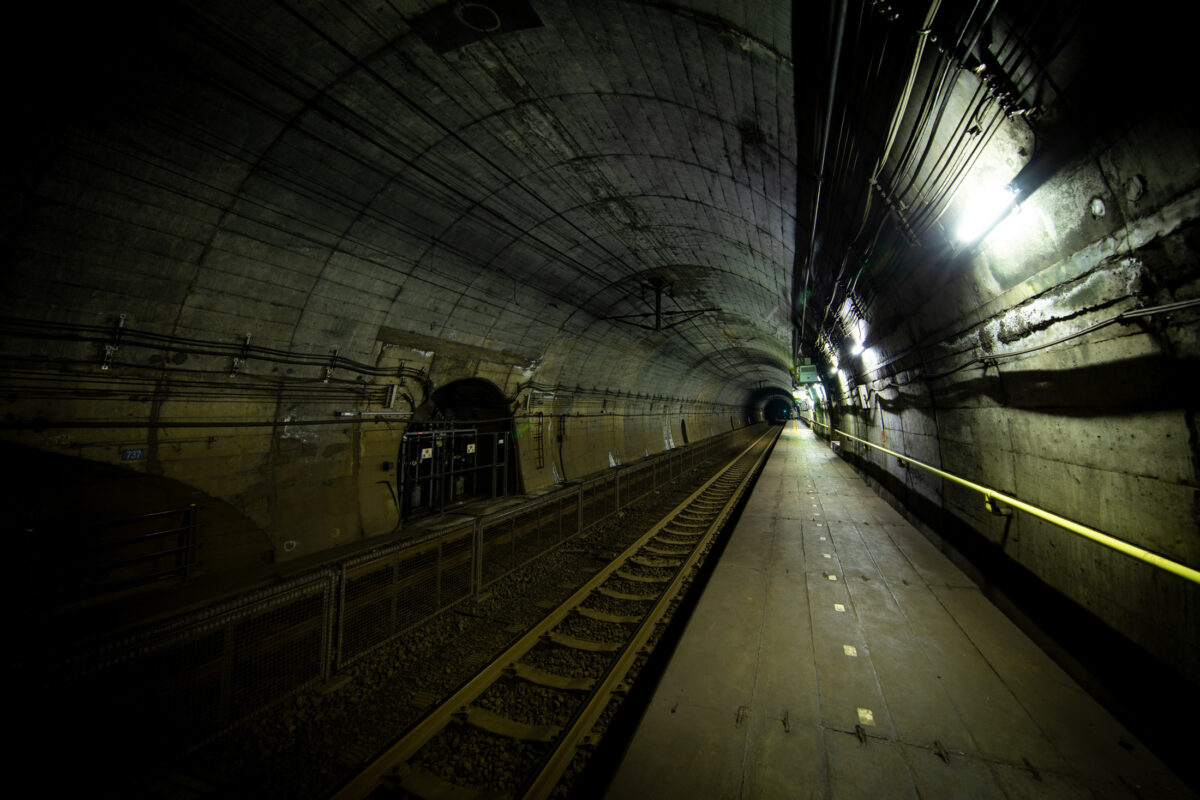
Cocooned in there I soon fall asleep, but when Tsutsuishi is announced I open my eyes. The doors unlock, a cool wind blows into the carriage. Out there it’s as dark as inside an oven, although lights seem to be shining. Could I have slept through the whole trip without realizing that night had fallen? Am I dreaming? I’m the only one leaving the train, which to my dismay pulls off with a phantasmagorical screeching. Around me, the walls – curved – drip with the high humidity. It’s very cold. I go through a door that looks like a nuclear shelter, cross a corridor, the wind lifts me as if to help climb the infinite number of steps leading up. A few minutes later, I’m blinded by the light … divine? No, just finally outside … and it’s very, very hot! Here I am in Tsutsuishi.
The hamlet of Tsutsuishi, on the outskirts of Itoigawa town, is a little-visited corner of Japan. Only the densha-otaku turn up to see the bunker-like station buried 40 m deep. So my trip is a good sign for the village.
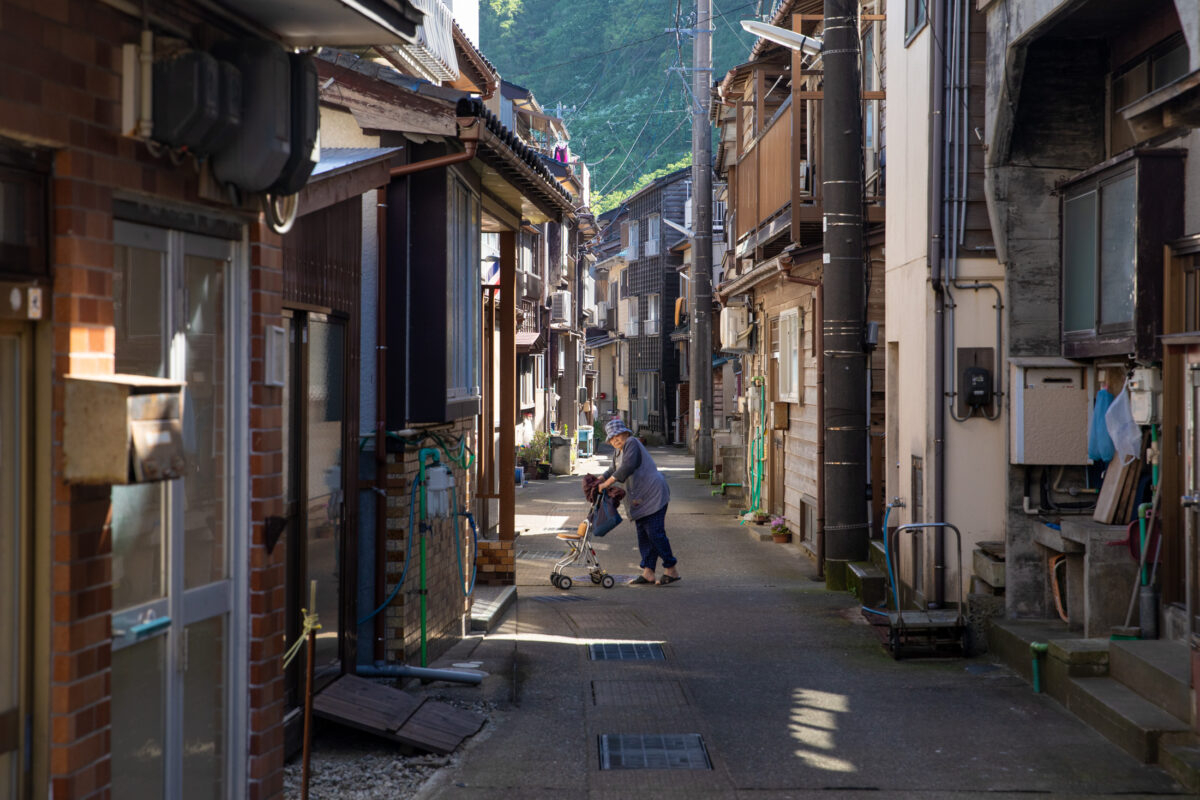
The village, wedged between mountain and sea, has been built in a very restricted space. The two- or three-storey houses are squeezed together along a narrow lane where no cars can pass. There’s no restaurant, only a mini supermarket. It’s morning, the mood is really sweet. “Shitsurei shimasu!” apologize the delivery men, sliding open the doors of the little houses. The obachan are busy with their flowers, others chat among themselves. Their husbands haven’t been home for a long time. As for the young people, if they’re still around, they’ve probably gone fishing.
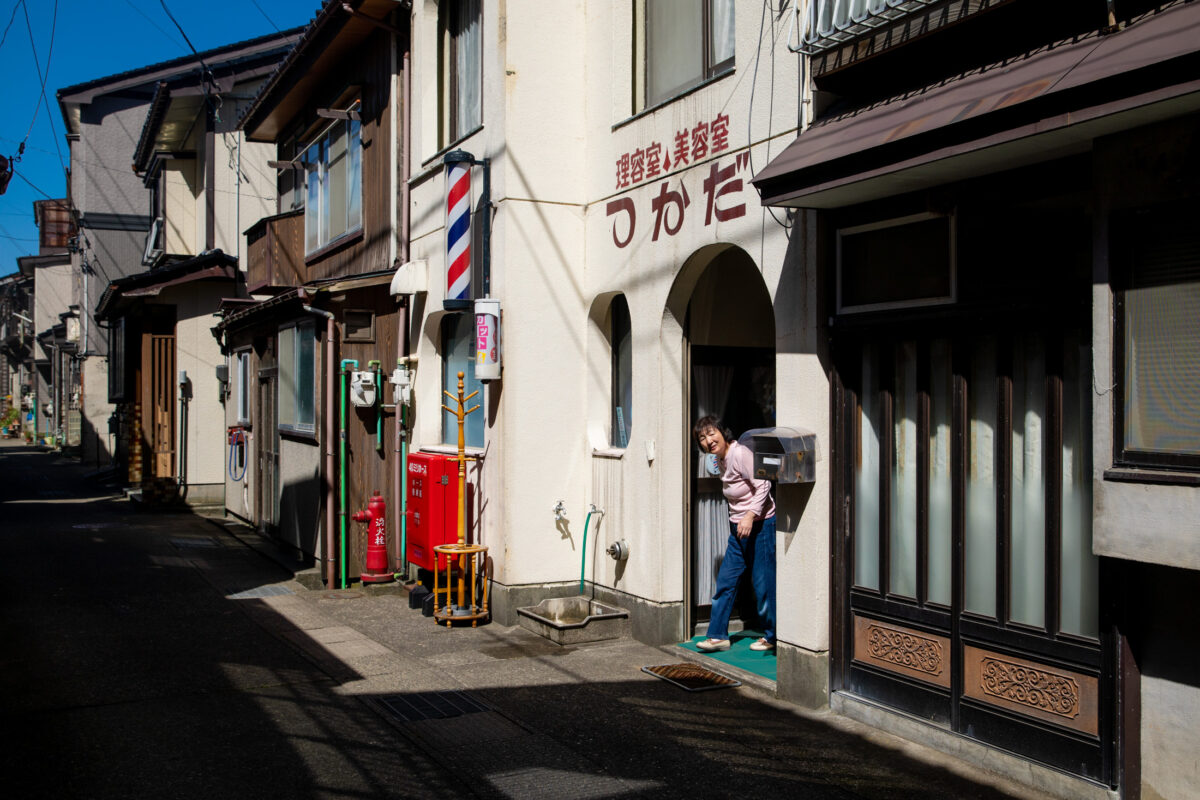
At the edge of the village are some old fishermen’s huts (funaya) facing the Sea of Japan. These huts once lined the length of the west coast. Often wiped out by the wind, the weather, or – sad to say – lack of interest, they’re now so rare. Tsutsuishi’s huts are still standing, but for how much longer?
And for more awesome content about Japan, follow Jordy Meow on Instagram ! 🎵

